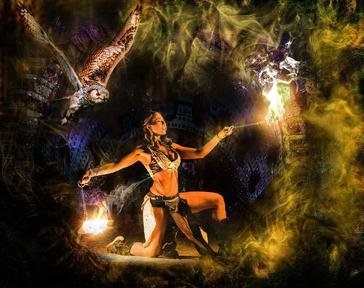Quiz Answer Key and Fun Facts
1. Which of the following dances, danced by men in white outfits with bells tied to their shins, has come to be seen as the "traditional" folk dance of England?
2. Which of these dances, premiered in 1914, became very popular in nightclubs of the 1930s and 40s, where it would be danced to the music of big bands with their crooning singers? Despite this history, the dance, with its slow 4/4 time, remains firmly in today's ballroom dancing repertoire.
3. What is the term used in Classical Ballet when either a male or female dancer performs a high leap, with their legs stretched almost in the splits position in mid-air?
4. This Central European dance is widely thought to have originated in Poland because of its name. The dance itself is a dance for two partners and is vigorously performed in circles around a dance floor in 2/4 time, often to a lively band with an accordion player. What is the name of this dance?
5. At many Scottish cultural festivals of music and dance, this particular dance is nearly always performed as a competition piece in full Highland costume. It consists of elaborate footwork danced on the spot, often guided by crossed swords or the cross of the Scottish flag placed on the stage. What is this dance called?
6. Which of the following is NOT one of the numerous fad dances which became frequent crazes in the 1960s?
7. Which dance is considered to be the national dance of Brazil, one which can be seen performed in the streets by almost everyone who attends Carnival in Rio, whether they're part of the formal parades or not?
8. During the mid-1990s "Riverdance", the show-piece of Irish music and dance, captivated audiences throughout the world. The thrilling finale of this show was the complete cast of dancers all dancing in unison in a traditional Irish way. What type of dance was being performed?
9. In the early 1970s this dance was originally performed to such songs as "Achy Breaky Heart", with dance names such as "Boot Scootin' Boogie". Now it is enthusiastically performed by people all over the world, and not just to American Country and Western music any longer. It is called the Texas Two Step.
10. It's Saturday night at the Community Hall. You and your partner are joining three other couples for an evening of dance and sociability. The women will be in flouncy skirts and the men in checked shirts. The dance moves will be called out to you by someone on stage with a mike. What is this dance?
Source: Author
smeone
This quiz was reviewed by FunTrivia editor
looney_tunes before going online.
Any errors found in FunTrivia content are routinely corrected through our feedback system.
